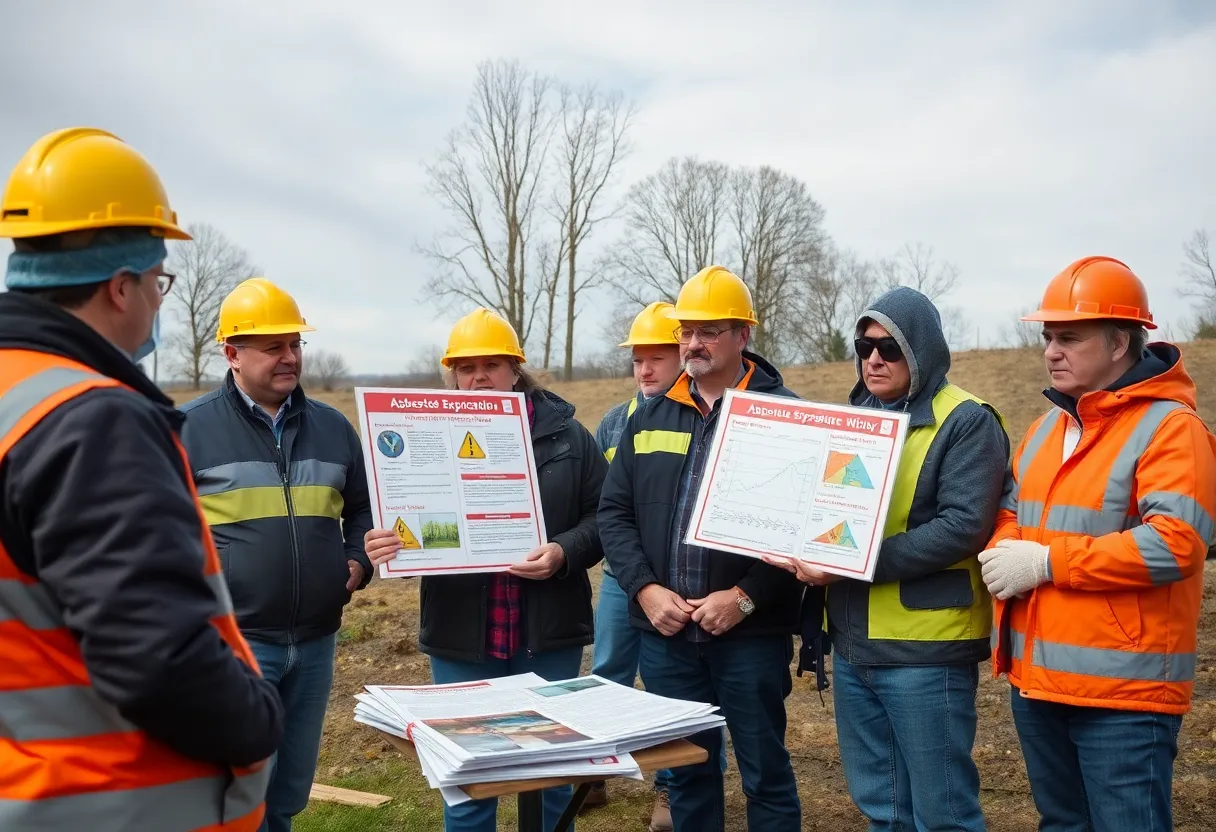News Summary
Pennsylvania faces an ongoing battle against asbestos exposure and mesothelioma, with alarming statistics on diagnosis, treatment challenges, and legal precedents.
Asbestos Threats and Mesothelioma: Pennsylvania’s Ongoing Struggle
In the heart of Pennsylvania, the shadows of asbestos exposure linger, casting a dark cloud over public health. Each year, approximately 3,000 individuals across the United States receive a diagnosis of the rare but deadly cancer known as mesothelioma, a disease that can manifest decades after the initial exposure to this hazardous material. A staggering 30% of mesothelioma cases are found among veterans, a reflection of the significant role military service has played in the exposure to asbestos.
The Silent Killer
One of the major challenges in addressing mesothelioma is the obscurity surrounding its diagnosis. The last concrete statistics, reported by the National Environmental Public Health Tracking Network in 2019, highlight the urgent need for a more effective tracking system. Misclassification of the disease is rampant, with pathologists inaccurately diagnosing mesothelioma in 20%-25% of cases. This issue not only skews mortality rate assessments but also often leaves families unaware of the true cause of death, as the CDC has indicated that many death certificates list alternate causes when they may actually be attributing to mesotheliomas.
Over 80% of mesotheliomas develop in the pleura, the lining of the lungs, where symptoms are commonly mistaken for less severe health issues. This misjudgment can lead to a significant delay in proper diagnosis and treatment, heightening the stakes for affected individuals.
Research Challenges
The limited research on mesothelioma compounds the problem, as many healthcare professionals lack clinical experience in treating this complex disease. To combat this, the CDC has proposed the establishment of a National Mesothelioma Registry by 2026, which aims to improve case identification and enhance research efforts by linking patients with researchers.
Pennsylvania’s Asbestos Legacy
Despite regulations implemented by the EPA that banned asbestos in 1989, the legacy of its use in Pennsylvania’s infrastructure remains. Asbestos can still be found in numerous buildings constructed prior to the ban, creating a lingering risk for anyone who comes into contact with these materials. Removal can often pose health risks and it is frequently safer to contain asbestos unless it has been disturbed.
From 1999 to 2017, Pennsylvania recorded a staggering 17,717 asbestos-related deaths, including 3,257 attributed specifically to mesothelioma. The span between 2015 and 2019 saw 176 individuals succumb to mesothelioma in the state, underscoring the profound impact of this illness. These alarming figures shine a light on the importance of ensuring legal protections for affected families, with Pennsylvania law allowing for claims related to medical expenses and damages for up to two years following a diagnosis.
Legal Precedents
In a recent notable case, a Pennsylvania jury awarded $3.8 million to Harry Chirdon, a former boilermaker who was diagnosed with mesothelioma after working for Foster Wheeler Corporation. The verdict included $2.3 million in compensatory damages and $1.5 million in punitive damages, emphasizing the jury’s determination of the company’s liability for the unsafe exposure of its employees to asbestos.
Health Risks and Ongoing Initiative
Asbestos was historically praised in construction for its fireproofing properties, yet it is now universally recognized as a carcinogen, responsible for causing mesothelioma and other related diseases such as asbestosis. The issue extends beyond industrial workplaces; schools built before the 1980s are likely to harbor hazardous asbestos materials, putting students and staff at risk. In 2018, alarming reports confirmed significant asbestos presence within Philadelphia area schools, prompting immediate closures for repairs.
In response to the ongoing danger, Pennsylvania Governor Shapiro has launched a critical $75 million initiative aimed at repairing or removing asbestos from educational institutions across the state, ensuring safer environments for both students and educators at 109 schools.
Conclusion: The Call for Action
The urgency of addressing the asbestos crisis in Pennsylvania is undeniable. As the CDC and local authorities work to rectify inaccuracies in diagnosis and expand research efforts, the state’s residents must remain vigilant regarding the continued health risks posed by asbestos. For families affected by mesothelioma, the path to justice and compensation is fraught with challenges, yet it is a fight worth pursuing in the battle against this preventable and tragic disease.
Deeper Dive: News & Info About This Topic
HERE Resources
Critical Alerts for HVAC Repair Technicians: Mesothelioma Risks Revealed
Penobscot County Takes Bold Steps to Demolish Asbestos-Laden Building
The Alarming Truth About Mesothelioma and Asbestos Exposure
Significant Waste Crime Fines Handed Down in Woburn Sands
The Asbestos Crisis Continues: Report Reveals Chinks in the Armor of NSW’s Management Strategies
EPA Takes Decisive Action to Ban Asbestos Use in the U.S.
U.S. Announces Historic Asbestos Ban: What You Need to Know
The Future of Mesothelioma Treatment: A Positive Transformation
United Kingdom Braces for Legal Battle Over J&J Talc Claims
Rising Tide of Lawsuits: Women Take on Pharma Giants over Health Risks
Additional Resources
- Asbestos.com: $3.8M Verdict in Mesothelioma Lawsuit
- Wikipedia: Mesothelioma
- The Legal Intelligencer: $3.8M Asbestos Verdict
- Google Search: Mesothelioma Research
- PR Newswire: $3.8 Million Verdict Announcement
- Google Scholar: Asbestos Health Risks
- MesotheliomaGuide: Pennsylvania Asbestos Investment
- Encyclopedia Britannica: Asbestos
- Google News: Asbestos Lawsuit Verdict



















